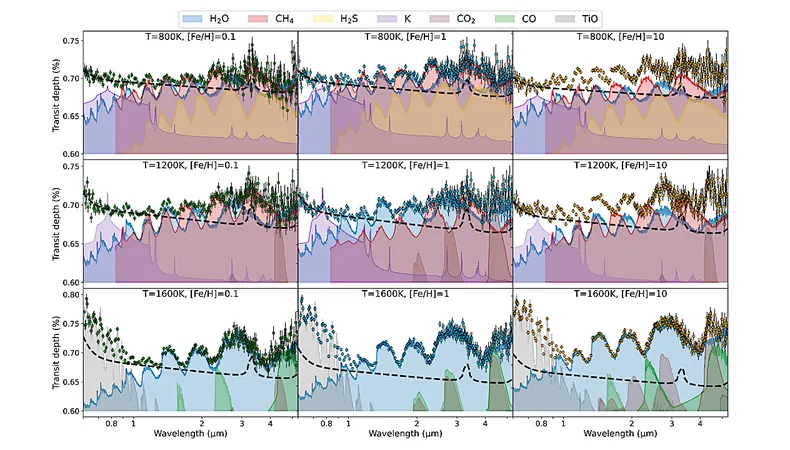
Unveiling the Secrets of Exoplanet Atmospheres: Detecting Polycyclic Aromatic Hydrocarbons like Never Before!
2024-11-15
Author: Sophie
Introduction
In an exciting new study, researchers have set their sights on the intriguing worlds beyond our solar system, specifically focusing on the presence of polycyclic aromatic hydrocarbons (PAHs) in exoplanet atmospheres. This groundbreaking paper aims to establish the conditions under which PAHs can be detected, potentially revolutionizing our understanding of these distant planets.
Methodology
The researchers utilized a self-consistent model known as petitCODE, combined with the advanced radiative transfer model petitRADTRANS, to simulate the unique transmission spectra of various exoplanets. This dual modeling approach allows them to effectively analyze how different planetary conditions affect the detectability of PAHs.
Observational Techniques
By employing the NIRSpec PRISM instrument aboard the James Webb Space Telescope (JWST), they subjected their simulations to the PandExo noise simulator to assess how well these compounds could be observed. The results of this research were further refined through Bayesian analysis using MULTINEST, providing a robust framework for interpreting the data.
Key Findings
The findings reveal that crucial factors like the carbon to oxygen (C/O) ratios and planetary temperatures significantly impact the spectral characteristics and detectability of PAHs. Notably, planets exhibiting solar metallicities ([Fe/H]=0 and 1), C/O ratios of 0.55, and temperatures around 1200 K emerged as the most promising candidates for PAH detection. These conditions allow for the detection of PAH abundance as low as 10^-7, a minuscule fraction when compared to the levels found in the interstellar medium (ISM).
Additional Insights
For colder worlds with reduced metallicities and C/O ratios, as well as hotter carbon-rich planets, the study suggests that PAHs could still be detected at concentrations around 10^-6. Such insights not only provide vital information for future observational missions but also enhance our tactical approach to identifying and studying these complex organic molecules in exoplanet atmospheres.
Conclusion
As the tools and methods continue to advance, the potential for revealing the chemical compositions of exoplanets becomes more tangible, opening doors to understanding the very building blocks of life in the universe. This research propels the field of astrobiology forward, inviting us to ponder whether we are alone in the cosmos or if life, fuelled by the same rich chemistry we find on Earth, exists elsewhere.
Future Prospects
Stay tuned as astronomers and researchers delve deeper into the mysterious atmospheres of distant worlds—who knows what cosmic wonders lie ahead!









 Brasil (PT)
Brasil (PT)
 Canada (EN)
Canada (EN)
 Chile (ES)
Chile (ES)
 España (ES)
España (ES)
 France (FR)
France (FR)
 Hong Kong (EN)
Hong Kong (EN)
 Italia (IT)
Italia (IT)
 日本 (JA)
日本 (JA)
 Magyarország (HU)
Magyarország (HU)
 Norge (NO)
Norge (NO)
 Polska (PL)
Polska (PL)
 Schweiz (DE)
Schweiz (DE)
 Singapore (EN)
Singapore (EN)
 Sverige (SV)
Sverige (SV)
 Suomi (FI)
Suomi (FI)
 Türkiye (TR)
Türkiye (TR)